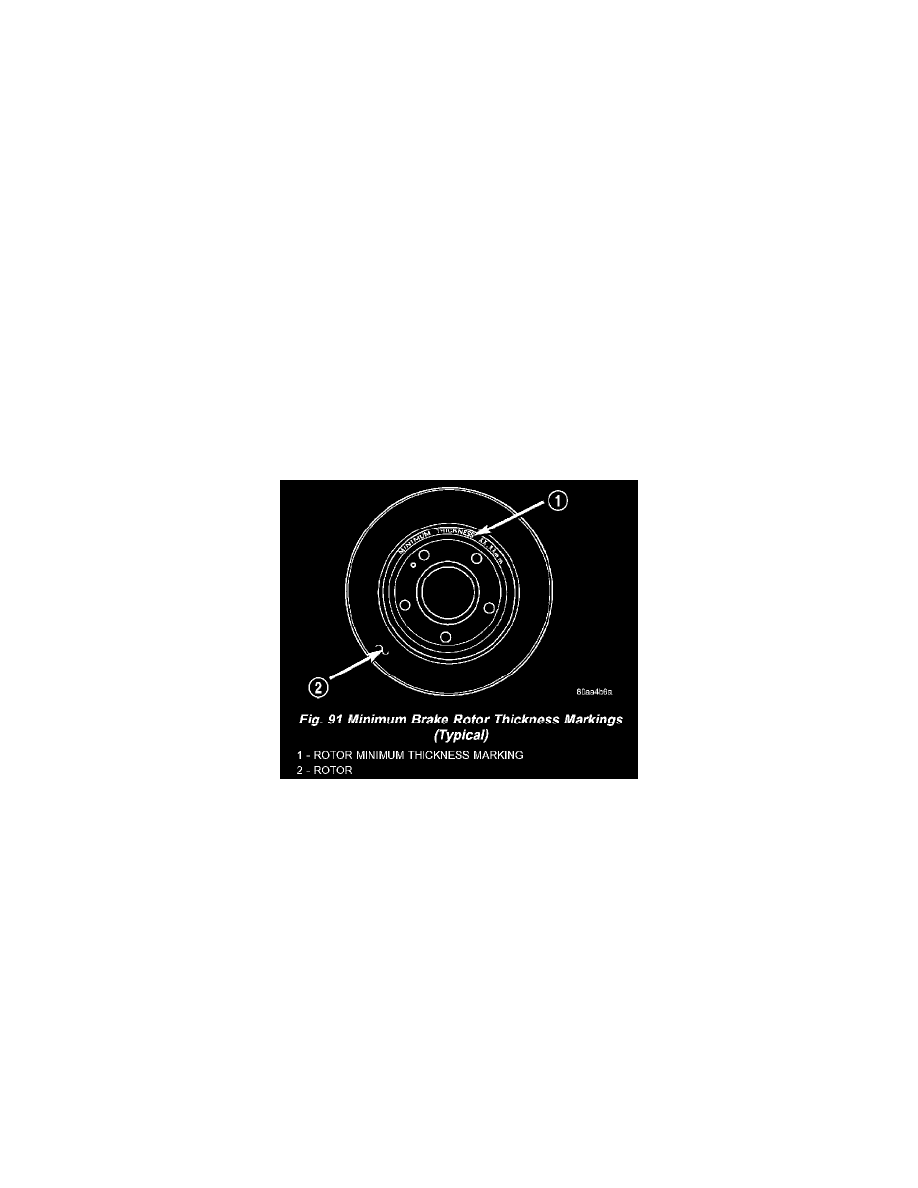PT Cruiser L4-2.4L Turbo VIN G (2004)

Brake Rotor/Disc: Testing and Inspection
DIAGNOSIS AND TESTING - BRAKE ROTOR
Any servicing of the rotor requires extreme care to maintain the rotor within service tolerances to ensure proper brake action.
Excessive runout or wobble in a rotor can increase pedal travel due to piston knock-back. This increases guide pin sleeve wear due to the tendency of
the caliper to follow the rotor wobble.
When diagnosing a brake noise or pulsation, the machined disc braking surface should be checked and inspected.
BRAKING SURFACE INSPECTION
Light braking surface scoring and wear is accept able. If heavy scoring or warping is evident, the rotor must be refaced or replaced.
Excessive wear and scoring of the rotor can cause improper lining contact on the rotor's braking surface. If the ridges on the rotor are not removed
befog new brake shoes are installed, improper wear of the shoes will result.
If a vehicle has not been driven for a period of time, the rotor's braking surface will rust in the areas not covered by the brake shoes at that time Once
the vehicle is driven, noise and chatter from the disc brakes can result when the brakes an applied until the rust wears away. Some discoloration or
wear of the rotor surface is normal and does not require resurfacing when linings are replaced. If cracks or burned spots are evident, the rotor must be
replaced.
ROTOR MINIMUM THICKNESS
Measure rotor thickness at the center of the brake shoe contact surface. Replace the rotor if it is wore below minimum thickness or if machining the
rotor will cause its thickness to fall below specifications.
CAUTION: Do not machine (turn) the rotor if it will cause the rotor to fall below minimum thickness.
Minimum thickness specifications are cast on the rotor's unmachined surface) (or stamped into the hat section). Limits can also be found in
specifications.
ROTOR THICKNESS VARIATION
